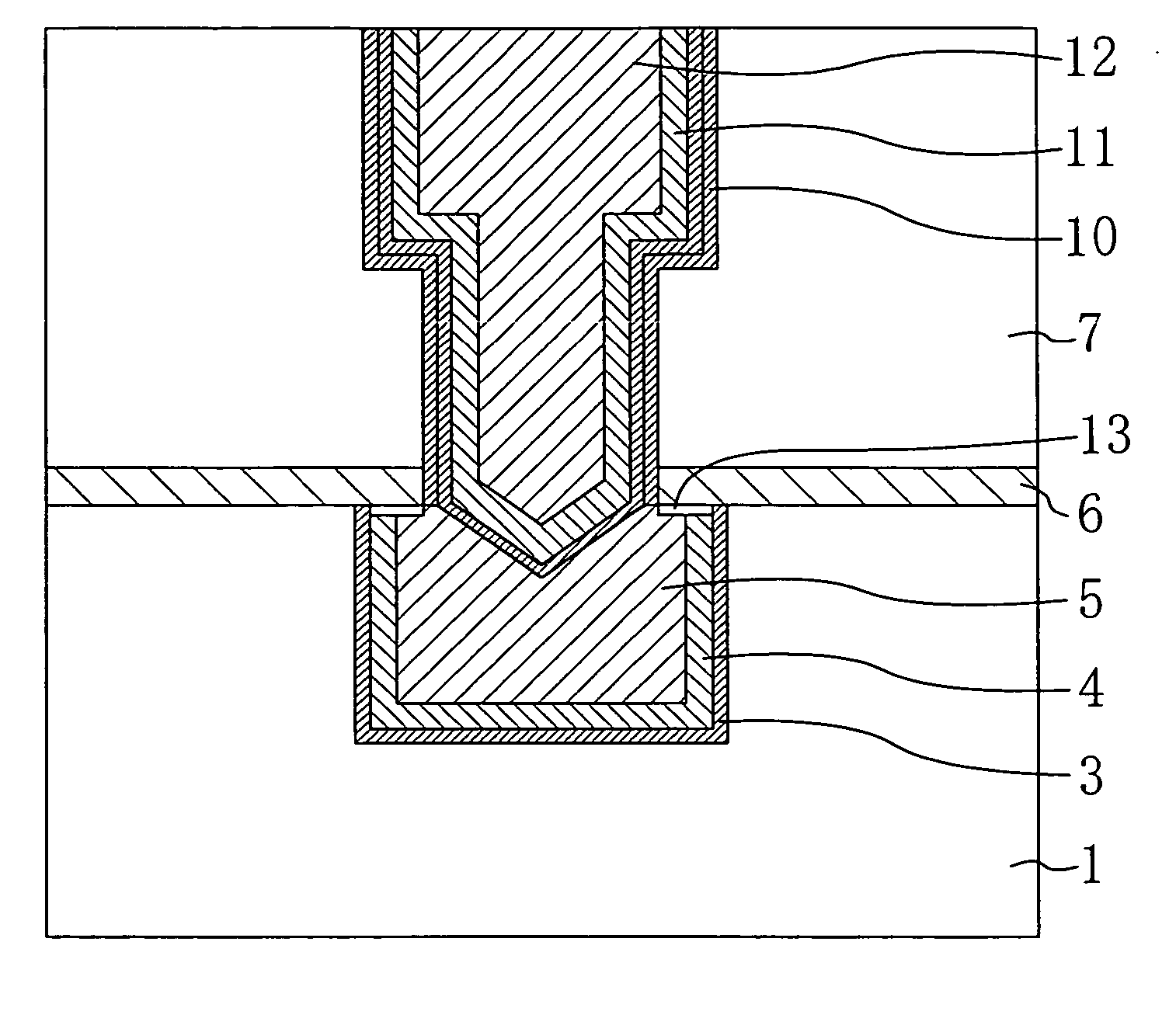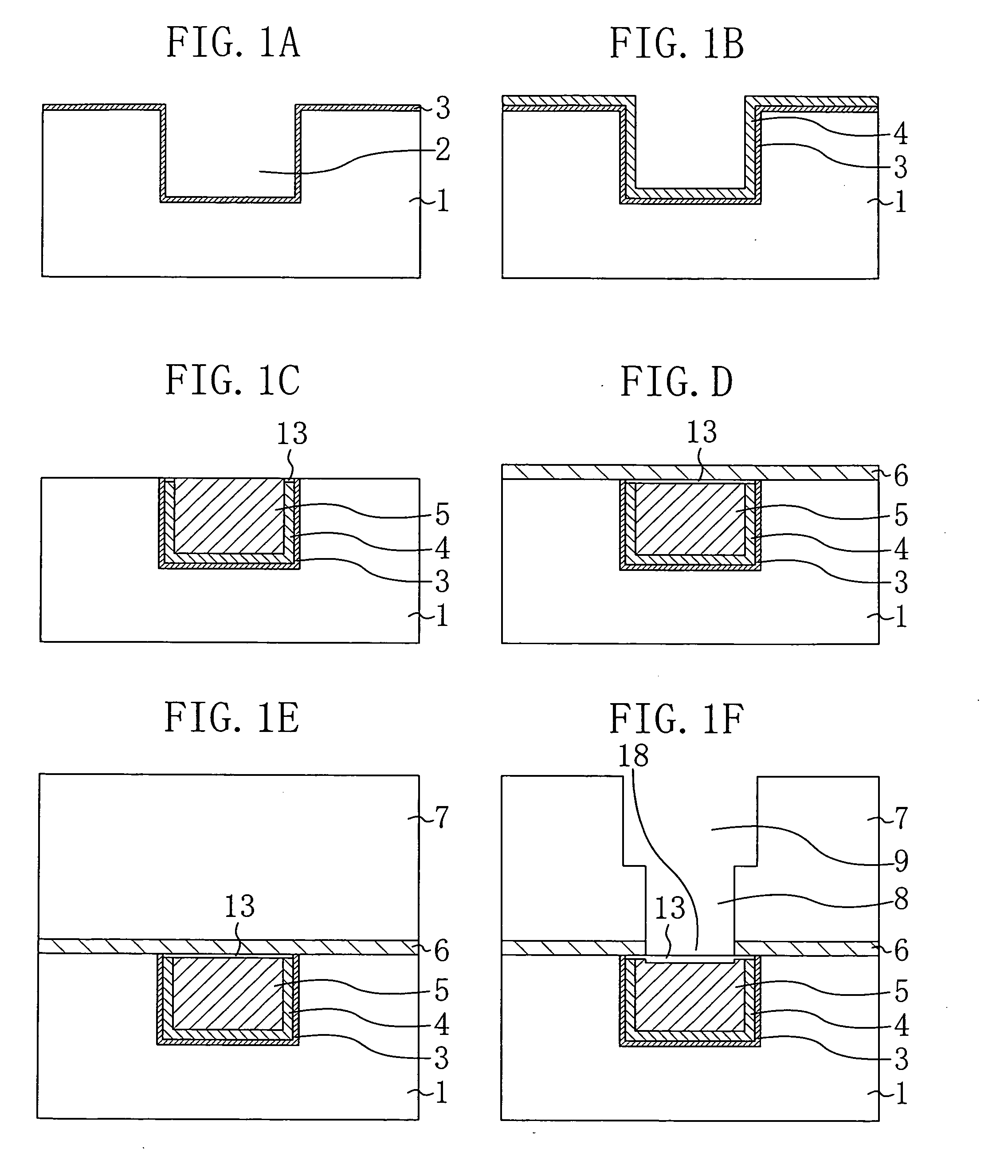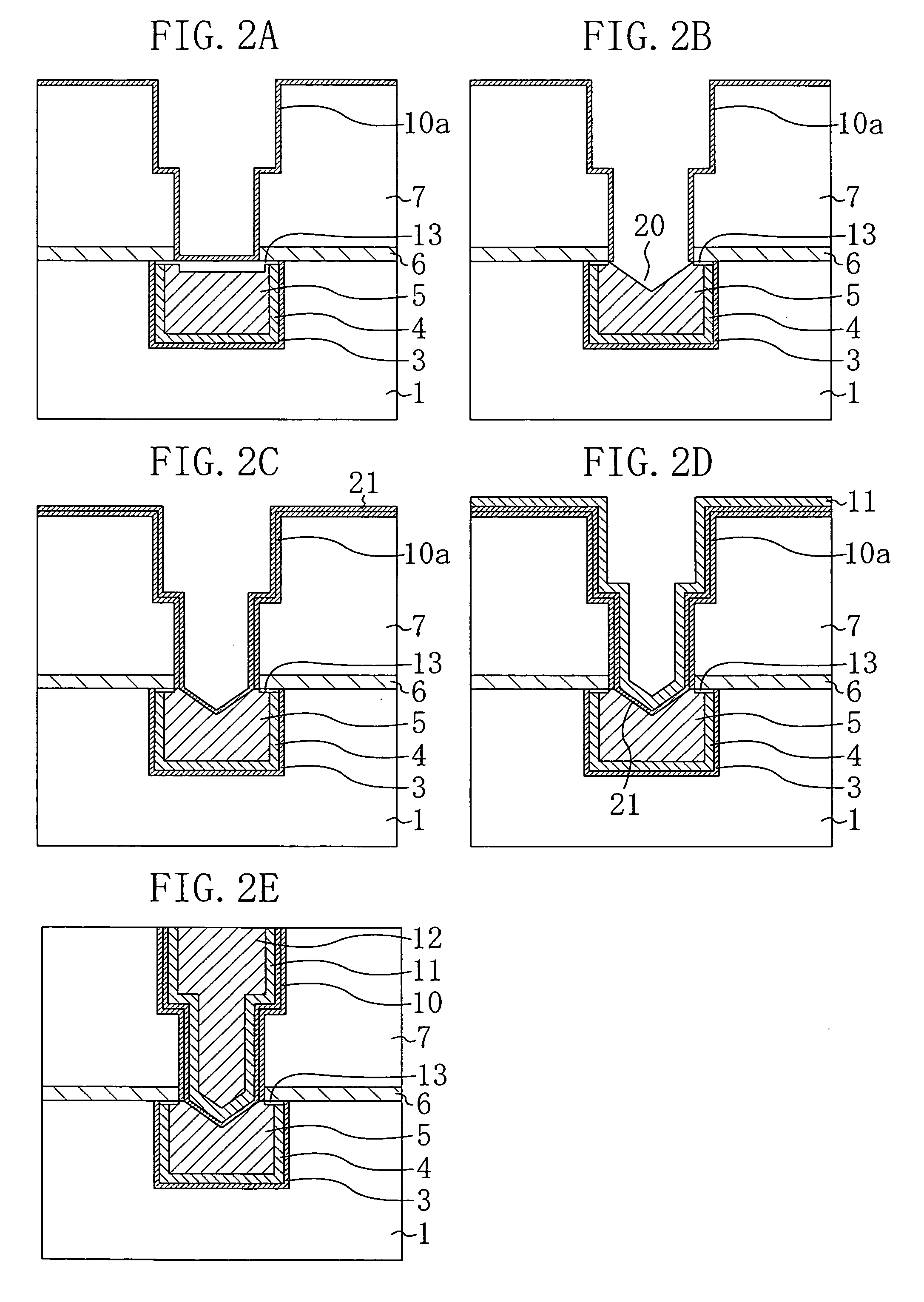Semiconductor device and manufacturing method therof
a technology of semiconductor devices and manufacturing methods, applied in semiconductor devices, semiconductor/solid-state device details, electrical apparatus, etc., can solve problems such as the increase of resistance between plugs and wires, and achieve the effect of reducing resistance values
- Summary
- Abstract
- Description
- Claims
- Application Information
AI Technical Summary
Benefits of technology
Problems solved by technology
Method used
Image
Examples
embodiment 1
[0035]FIGS. 1A through 1F and FIGS. 2A through 2E are cross sections illustrating a semiconductor device manufacturing method according to Embodiment 1 of the present invention.
[0036] First, referring to FIG. 1A, a lithography step is performed to form a resist. Then, an etching process is performed using the resist as a mask so as to form a first wire trench 2 in a first interlayer dielectric film 1, the first interlayer dielectric film 1 being formed of a low dielectric constant material on a substrate (not shown). Next, as a preparatory process, an annealing process is performed on the substrate (semiconductor device) for 60 seconds in a hydrogen atmosphere at a temperature of 280° C. so as to reduce an oxide formed on a surface of the semiconductor device. Then, as a barrier metal film 3, a tantalum nitride film having a thickness of 5 nm and a tantalum film having a thickness of 10 nm are formed by, for example, sputtering. In this case, the barrier metal film 3 is a metal fil...
embodiment 2
[0055]FIGS. 4A through 4I are cross sections illustrating a semiconductor device manufacturing method according to Embodiment 2 of the present invention. The method of removing the Al oxide formed on the first wire in the manufacturing method of Embodiment 2 is different from that in the manufacturing method of Embodiment 1.
[0056] First, referring to FIG. 4A, a lithography step is performed to form a resist. Then, an etching process is performed using the resist as a mask so as to form a first wire trench 2 in a first interlayer dielectric film 1, the first interlayer dielectric film 1 being formed of a low dielectric constant material on a substrate (not shown). Next, as a preparatory process, an annealing process is performed on the substrate (semiconductor device) for 60 seconds in a hydrogen atmosphere at a temperature of 280° C. so as to reduce an oxide formed on a surface of the semiconductor device. Then, as a barrier metal film 3, a tantalum nitride film having a thickness ...
PUM
 Login to View More
Login to View More Abstract
Description
Claims
Application Information
 Login to View More
Login to View More - R&D
- Intellectual Property
- Life Sciences
- Materials
- Tech Scout
- Unparalleled Data Quality
- Higher Quality Content
- 60% Fewer Hallucinations
Browse by: Latest US Patents, China's latest patents, Technical Efficacy Thesaurus, Application Domain, Technology Topic, Popular Technical Reports.
© 2025 PatSnap. All rights reserved.Legal|Privacy policy|Modern Slavery Act Transparency Statement|Sitemap|About US| Contact US: help@patsnap.com



